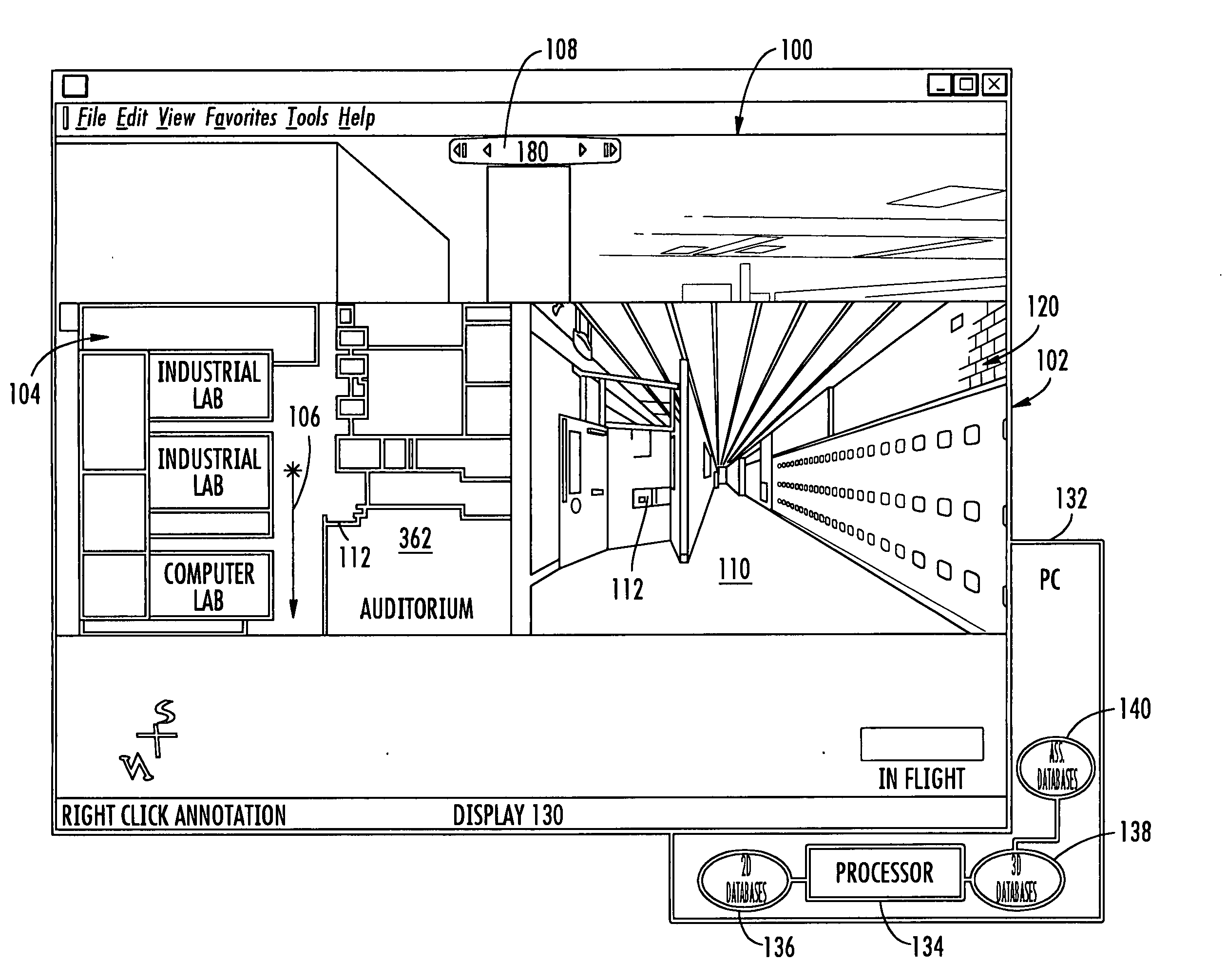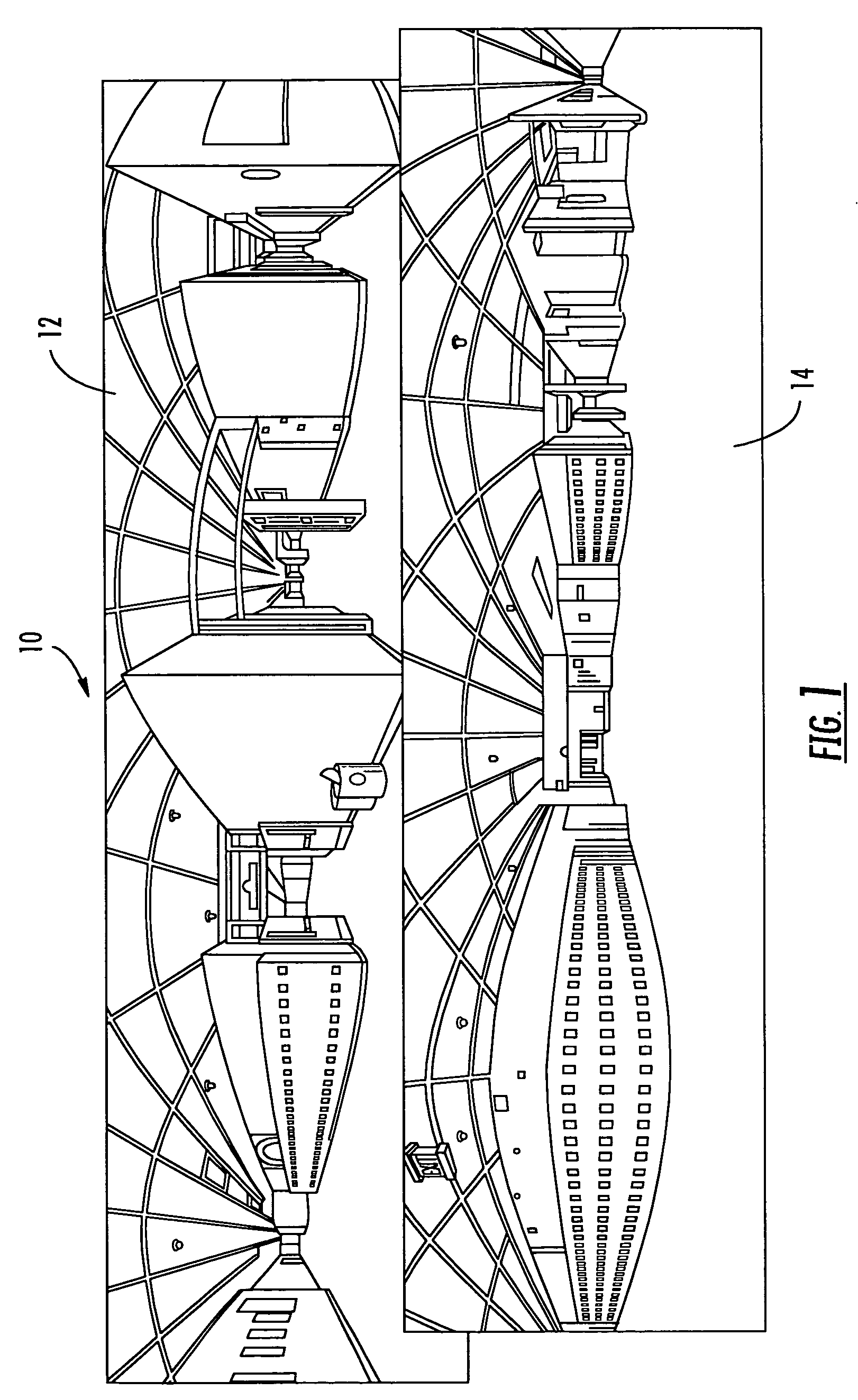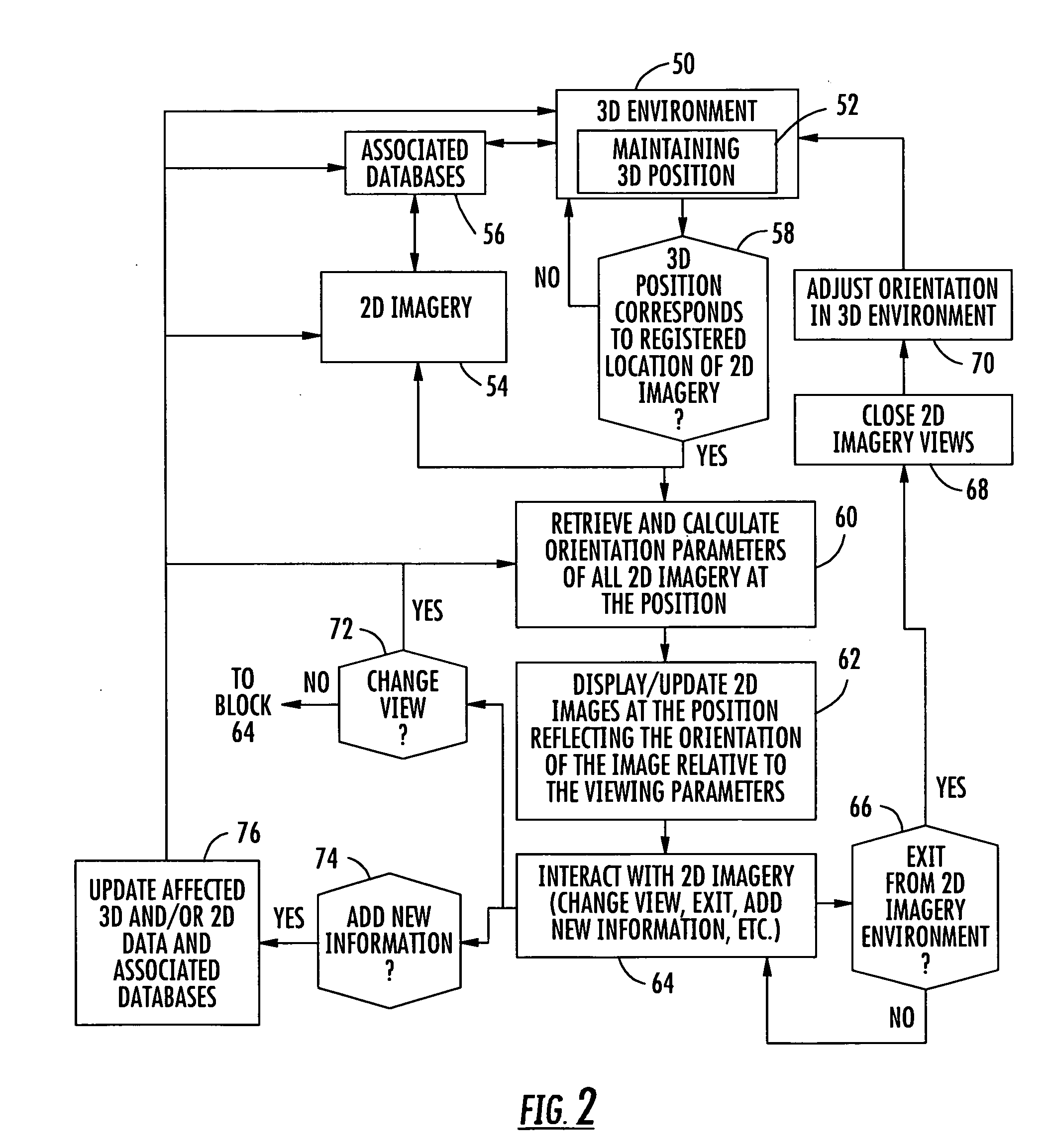System and method for correlating and synchronizing a three-dimensional site model and two-dimensional imagery
a site model and two-dimensional imagery technology, applied in the field of computer graphics, can solve the problems of difficult to identify what a user is looking at when viewing images, the type of software imaging applications are difficult to manage and view in a spatially accurate context, and drawbacks of such commercially available systems, so as to achieve the effect of improving the imag
- Summary
- Abstract
- Description
- Claims
- Application Information
AI Technical Summary
Benefits of technology
Problems solved by technology
Method used
Image
Examples
Embodiment Construction
[0018]Different embodiments will now be described more fully hereinafter with reference to the accompanying drawings, in which preferred embodiments are shown. Many different forms can be set forth and described embodiments should not be construed as limited to the embodiments set forth herein. Rather, these embodiments are provided so that this disclosure will be thorough and complete, and will fully convey the scope to those skilled in the art. Like numbers refer to like elements throughout.
[0019]In accordance with a non-limiting example of the present invention, the system and method correlates and synchronizes a three-dimensional site model and two-dimensional imagery with real or derived positional metadata, for example, floor plans, panoramic images, video and similar images to establish and maintain a spatial orientation between the images, such as formed from disparate data sets. For example, a two-dimensional floor plan image could be displayed as centered on a collection p...
PUM
 Login to View More
Login to View More Abstract
Description
Claims
Application Information
 Login to View More
Login to View More - R&D
- Intellectual Property
- Life Sciences
- Materials
- Tech Scout
- Unparalleled Data Quality
- Higher Quality Content
- 60% Fewer Hallucinations
Browse by: Latest US Patents, China's latest patents, Technical Efficacy Thesaurus, Application Domain, Technology Topic, Popular Technical Reports.
© 2025 PatSnap. All rights reserved.Legal|Privacy policy|Modern Slavery Act Transparency Statement|Sitemap|About US| Contact US: help@patsnap.com



